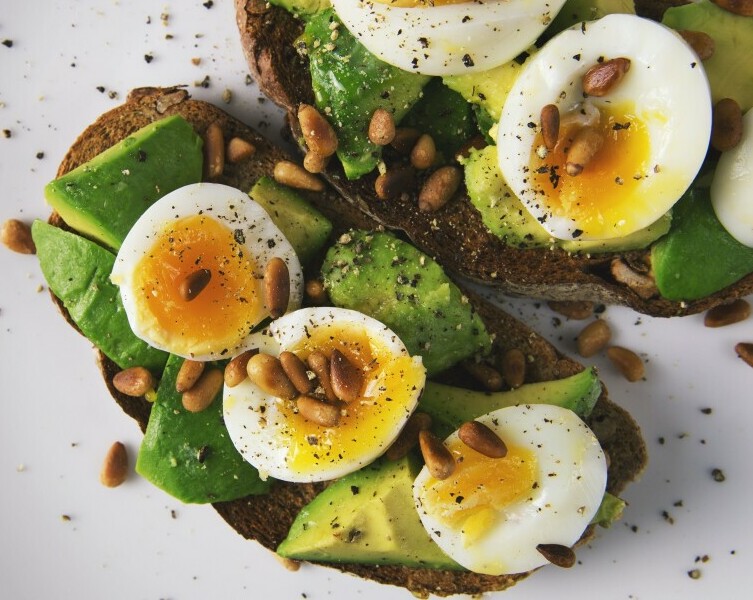Are you considering a switch to a ketogenic, or ‘keto,’ diet? I’m going to walk you through the fundamentals of this popular diet trend, from what exactly it entails to the potential health perks it offers. This isn’t just about cutting carbs; it’s also about transforming how your body fuels itself.
The ketogenic diet is a high-fat, moderate-protein, and very low-carbohydrate eating plan. Its primary goal is to shift your body’s metabolism from carbs to fats. This metabolic state is known as ketosis, where the body uses ketone bodies—produced from fats—for energy, instead of glucose from carbohydrates.
You’re going to find out about various benefits tied to the keto lifestyle. For many, weight loss is a significant draw, as the diet’s structure can help reduce appetite and improve fat burning. But that’s not the only reason to give it a try—improved heart health, better control of blood sugar levels for those with type 2 diabetes, and even a clearer mind are also potential bonuses.
A question I often hear is, ‘Does the keto diet really work for weight loss?’ According to research, the answer is yes for many individuals, with studies indicating that participants on a keto diet can often lose more weight than those on more traditional low-fat diets. But that’s not all—keto enthusiasts often report higher levels of energy and a clearer mental state, benefits that go beyond the scale.
======>Try the 21 day smoothie challenge<=====
Your Keto Diet Plan Explained: Macronutrient Ratios and Food Choices
Let’s get to the core of your keto diet plan: the macronutrient ratios. This is where the magic happens. You’re going to aim for around 70-75% of your daily calories from fats, 20-25% from protein, and a mere 5-10% from carbohydrates. Keeping to these percentages is crucial for pushing your body into a state of ketosis, where it burns fat for fuel instead of glucose.
Now, what’s on the menu? Choose high-fat foods like avocados, cheese, nuts, and fatty cuts of meat. These are your new best friends. When it comes to protein, opt for grass-fed and organic if you can. As for carbs, you’re going to focus on vegetables that grow above ground, while limiting fruits to small portions of berries.
Steer clear from foods that are high in carbs. That means saying goodbye to bread, pasta, and sweets — basically, anything with sugar or starch. This isn’t just about losing weight, it’s also about reshaping your diet to focus on nutritious, whole foods.
Remember, each person’s body is unique. You can always adjust your approach down the road, but starting with these guidelines will set you up on the right path. Also, it’s not all about the scale; pay attention to how you feel. If you’re full of energy and your cravings are in check, you’re probably on the right track.
Prepping for Success: Meal Planning and Shopping Tips
You’re going to find out about creating a successful keto meal plan, which is essential for sticking to your goals. I’m here to help you turn that daunting task into an exciting weekly ritual.
First up, a weekly keto meal plan isn’t just about penciling in your favorite cheese-covered dishes; it involves careful consideration of your macros and variety to ensure nutritional balance. Choose something that resonates with you meal-wise, and make sure it fits within your carb limit. Planning ahead helps avoid the temptation of carb-heavy conveniences.
So you’ve got your meals planned; what’s next? Kitchen tools. Believe me, having the right tools on hand can be a game-changer. It could be as simple as a spiralizer for making zucchini noodles or a good blender for those bulletproof coffees.
Now, about shopping. You can always adjust your approach down the road, but starting with a targeted keto-friendly grocery list will keep you focused. Stock up on essentials like high-fat dairy, quality meats, and leafy greens. Don’t forget to read labels; hidden carbs are in more foods than you might expect.
When it comes to meal prep, it’s not just about saving time. It’s a strategy I like to leverage for ensuring that I always have access to keto-friendly options, especially when life gets hectic. Cook in batches and portion out meals for days when you know you’ll be busy.
Your first attempt at meal planning and prepping doesn’t need to be perfect. It’s all about learning what works for your lifestyle and preferences. As you get more comfortable, you’ll find that staying on track with your keto diet becomes second nature.
Overcoming Challenges: Dealing with Keto Side Effects and Plateaus
If you want to see results on the keto diet, understanding and managing potential side effects and plateaus is crucial. Let’s talk about the common hurdles you might encounter and how to handle them.
One of the first issues many people face is the ‘keto flu.’ This isn’t a flu at all, but a collection of symptoms like fatigue, headaches, and irritability that can occur as your body adapts to burning fat instead of carbs. To curb these symptoms, make sure you’re getting enough water and electrolytes, especially sodium, potassium, and magnesium.
Another common side effect is changes in digestion, such as constipation or diarrhea. To combat this, be sure to include fibrous, low-carb vegetables in your meals and stay hydrated. Over time, your digestive system should adjust.
You might also hit a weight loss plateau after initially losing some weight. When this happens, don’t panic. Take a closer look at your macronutrient intake and consider tweaking your fat and protein ratios. Moreover, ensure you’re not unknowingly consuming hidden carbs that can sneak in through sauces and dressings.
Your first attempt doesn’t need to be your last. If your progress stalls, reassess your overall calorie intake and physical activity level. Sometimes, introducing intermittent fasting or adjusting meal timing can kickstart weight loss again.
Just don’t focus too much on perfection. It’s about progress. Make small, sustainable changes and be patient with yourself. Remember, a plateau is a common part of any weight loss journey and can be a signal to recalibrate your approach.
Sustaining a Keto Lifestyle: Long-term Strategies and Considerations
A keto diet isn’t just a quick fix; it can evolve into a sustainable way of life for many. There’s a good chance that by the time you’ve navigated the initial hurdles, you’ve found a rhythm that feels natural and attainable. Choose something that resonates with you within the keto framework and use it as your anchor.
In your day-to-day life, you’re going to encounter situations where sticking to your keto plan might be challenging. Eating out, holiday dinners, and travel, for instance, require a bit of foresight. I’m here to help you with strategies such as identifying keto-friendly menu options, communicating your dietary needs, and even bringing your own snacks to gatherings. Don’t worry too much about the occasional slip-up; consistency over perfection is key.
Physical activity can amplify the keto diet’s benefits. Whether it’s lifting weights, taking brisk walks, or any other form of exercise you enjoy, the integration of regular movement helps boost energy expenditure and can enhance metabolic health. Adjust your approach down the road as you become more attuned to your body’s needs.
There may come a time when you feel ready to transition off the keto diet. Maybe your goals have changed, or perhaps you’re curious to reintroduce more carbs. If you decide to move in a new nutritional direction, do it thoughtfully to maintain the health gains you’ve achieved. Allow your body to adjust gradually, and keep an eye on how different foods affect you.
Ultimately, maintaining a keto lifestyle is about finding balance and making choices that contribute to your overall well-being. Remember, your first attempt at keto doesn’t need to be your last. Life’s about adaptation, and the same holds true for any diet. Whatever your path forward, I really hope that the insights you’ve gained from keto enrich your journey toward health and happiness.
